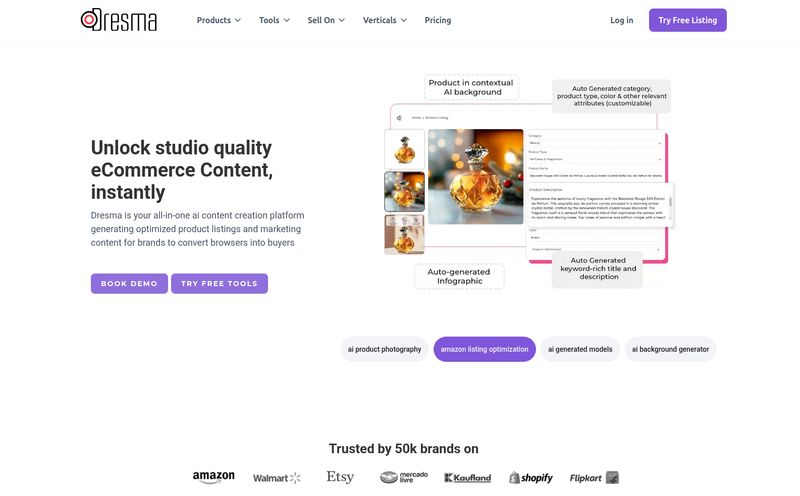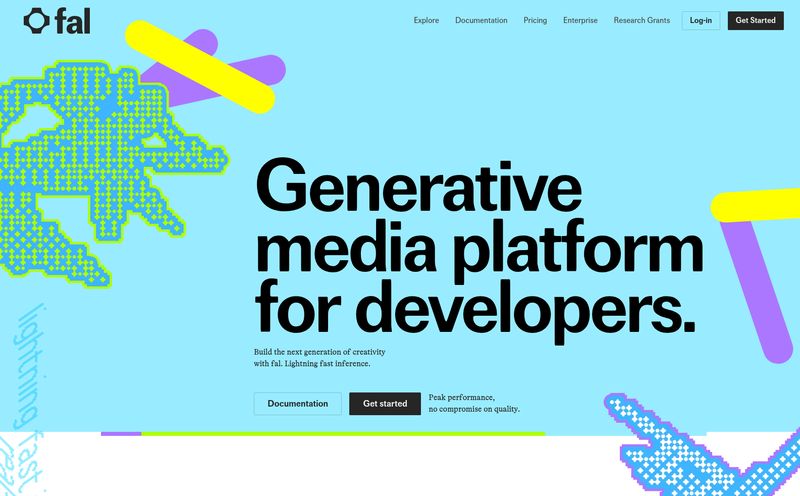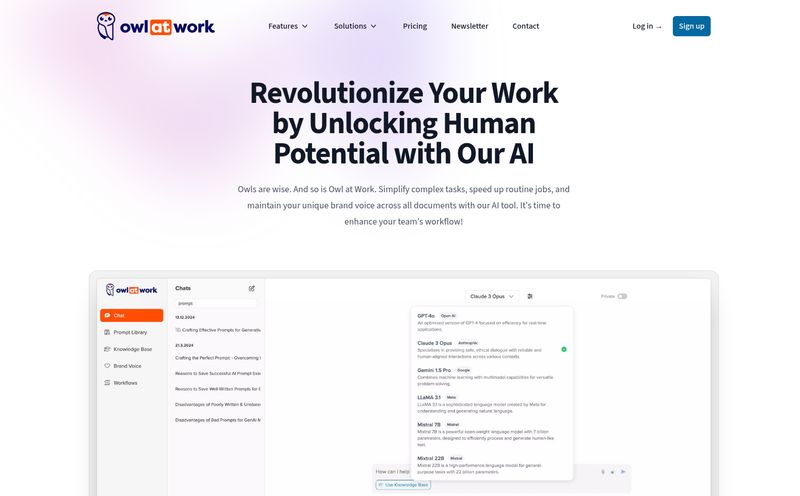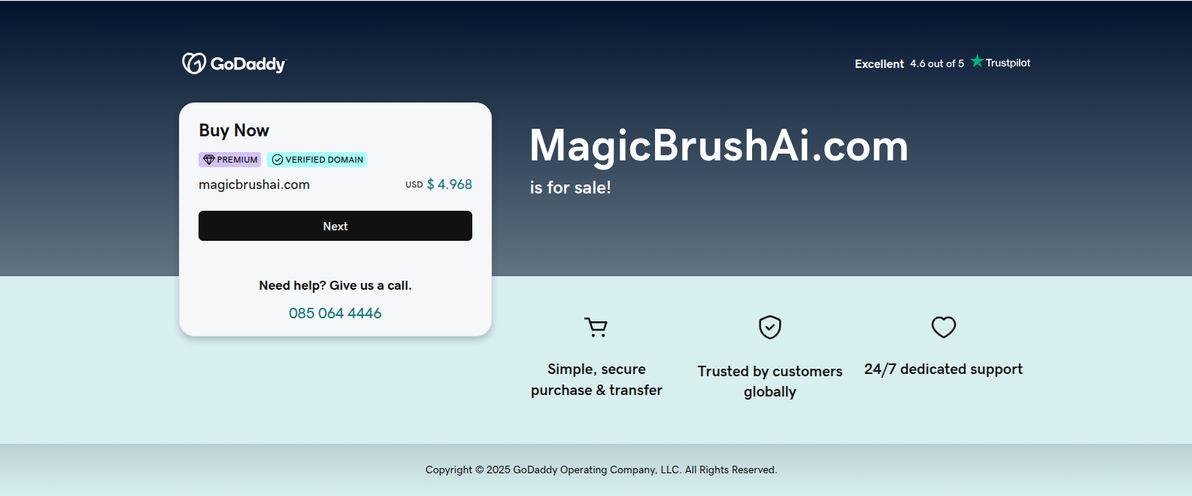We’ve all been there. You see these jaw-dropping AI-generated images flooding your Instagram and Reddit feeds, and a little voice whispers, “I want to do that.” So you sign up for Midjourney or wade into the deep waters of Stable Diffusion. Hours later, you’re still wrestling with prompts, trying to remember if it’s `--ar 16:9` or `--aspect 16:9`, and your creation looks less like a “cyberpunk warrior in a neon-drenched city” and more like a melted action figure.
The learning curve for powerful AI art tools is, frankly, a mountain. It’s a fun climb for us geeks, but not everyone wants to become a full-time ‘prompt engineer’ just to get a cool new profile picture.
That’s the exact frustration a tool like PhotoAI seems designed to solve. Its headline promise is seductive: turn your photos into incredible AI art, especially in a gorgeous Ghibli-inspired style, with basically zero effort. No prompts. No training models. Just upload some pics and let the magic happen. Sounds too good to be true, right? As a guy who has spent way too many late nights tweaking AI parameters, I was skeptical but intrigued. So, I did a deep dive to see if PhotoAI is the real deal or just another gimmick.
What on Earth is PhotoAI Anyway?
At its core, PhotoAI isn't a tool you operate, it's a service you use. This is a super important distinction. You aren't given a blank canvas and a box of complex digital crayons. Instead, you're handing your photos over to a specialized AI artist who promises to come back with a masterpiece.
The process is simple: you feed it a collection of your own photos (around 10 to 20), pick a theme you like from their menu—the star of the show being the “Ghiblify” pack—and then… you wait. In the background, PhotoAI trains a custom AI model based on your face and features. This is key. It’s not just pasting your face onto a template; it’s generating brand new images of you, in that style. The result is a set of completely unique, personalized AI portraits delivered straight to your email.
How PhotoAI Works (And Why It’s So Different)
The workflow is the polar opposite of what most of us in the SEO and tech space are used to. We love our dashboards, our settings, our little toggles of control. PhotoAI throws all that out the window in favor of pure simplicity.
Think of it this way. Traditional AI art generation is like being given the keys to a professional kitchen. You have all the ingredients and equipment, but you need to know the recipe and have the skill to cook. PhotoAI is like ordering from a high-end restaurant with a set menu. You just choose what you want—say, the Ghibli special—and a professional chef (the AI) handles everything behind the scenes. You lose creative control, sure, but you're almost guaranteed a delicious meal without burning down your own kitchen.
This ‘done-for-you’ approach is its biggest strength and, for some, its most significant weakness. There’s no room to whisper, “a little more shadow here” or “make the eyes a different color.” You are placing your trust entirely in the algorithm. For the average person, this is a blessing. For the creative control freak (hello, it's me), it's a fascinating exercise in letting go.
Putting the Famous "Ghiblify" Style to the Test
Let's talk about the main event. The Ghibli aesthetic. Choosing this as their flagship style is, in my opinion, a stroke of marketing genius. That dreamy, nostalgic, hand-painted look from films like Spirited Away and My Neighbor Totoro has a universal appeal that cuts across generations. It’s warm, it's whimsical, and it’s instantly recognizable. Who hasn’t daydreamed about what they’d look like as a character in one of those worlds?
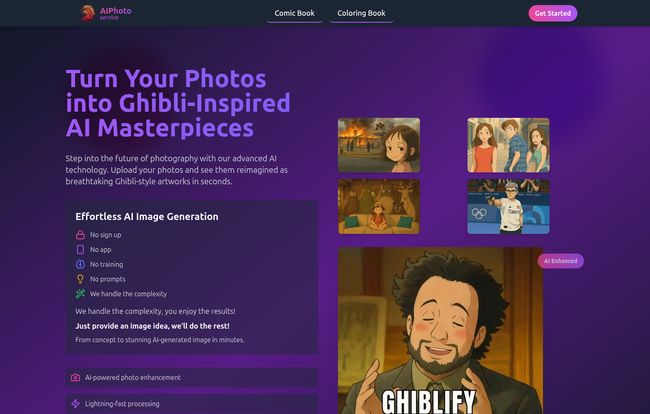
Visit PhotoAI
PhotoAI promises to turn that daydream into a digital reality. Based on their examples, the results are pretty impressive. It's not just a simple filter that washes over a photo. The AI appears to genuinely reinterpret the source images, changing clothing, backgrounds, and poses to fit the Ghibli universe. It captures the soft color palettes, the distinct character outlines, and that overall sense of gentle wonder. The real test, of course, is how well it translates an individual's likeness into that style without it looking generic.
Getting this right is tougher than it looks. It's a delicate balance. You want it to look like you, but also like it was hand-drawn by Hayao Miyazaki's team. From what I’ve seen, PhotoAI leans into getting the vibe perfect, which is probably the right call.
Beyond Ghibli: What Else Is Cooking?
While the Ghibli style is the main draw, PhotoAI isn't a one-trick pony. The website also mentions other style packs like “Comic Book” and “Coloring Book.” This is a smart move, broadening its appeal. The Comic Book style could be perfect for a heroic-looking LinkedIn or Discord profile picture, while the Coloring Book option is a really neat idea for creating personalized gifts, especially for kids. Imagine giving a child a coloring book where the main character is… them! That's a pretty cool and unique application that I haven't seen much elsewhere.
Let's Talk Money: The PhotoAI Pricing Plan
Okay, so how much does this AI magic cost? The pricing model is refreshingly straightforward, especially in a world dominated by confusing subscription tiers. It's a one-time payment structure.
| Plan | Price | What You Get |
|---|---|---|
| Basic Plan | $4.99 | You get 5 AI-generated images, a choice from multiple style packs, and high-quality transformations sent via email. |
| Premium Plan | $8.99 | This gives you 10 AI-generated images, access to all style packs, priority processing (your job jumps the queue), and advanced customization options. |
In my opinion, this is a pretty fair deal for what's being offered. The Basic plan is priced perfectly for an impulse buy. For less than a fancy coffee, you can satisfy your curiosity and get a few cool images. The Premium plan offers better value per image and is probably the way to go if you're serious about getting a great result. I really appreciate that it isn't a subscription. There are no recurring fees to worry about cancelling, which lowers the barrier to entry considerably.
The Good, The Bad, and The AI
So, after digging through it all, what's the verdict? Like any service, it’s a mix of pros and cons.
The Good Stuff
The absolute biggest win for PhotoAI is its accessibility. There is virtually no learning curve. If you can upload photos to Facebook, you can use this. It opens up the world of creative AI to a massive audience that would be intimidated by other tools. I also love that it trains a custom model on your face. This is a significant step up from cheap face-swapping apps and leads to far more authentic and integrated results. The AI isn't just wearing your face like a mask; it's learned your features.
The Potential Downsides
No tool is perfect. The first hurdle is the need to upload 10-20 photos of yourself. While this is necessary for the AI to learn, finding that many decent, well-lit, and varied photos can feel like a chore. Another point of consideration is the price per image. If you’re a power user who generates hundreds of images a month with a Midjourney subscription, this will feel expensive. But again, you're not paying for volume; you're paying for convenience and a specific, curated service. Lastly, there's the lack of control. You are completely at the mercy of the AI's interpretation. For artists or creatives who have a very specific vision, this “black box” approach could be frustrating.
Frequently Asked Questions about PhotoAI
I noticed a few common questions on their site, so let's tackle them head-on in plain English.
How long until I get my pictures?
They say delivery is quick via email. Since it involves training a custom AI model, I'd expect it to take anywhere from 30 minutes to a few hours, depending on how busy their servers are. The Premium plan's 'priority processing' likely bumps you to the front of the line.
What kind of photos work best?
You'll want a variety. Close-ups, profile shots, full-body shots. Use photos with different backgrounds, lighting conditions, and facial expressions. The more data you give the AI, the better it will learn your likeness.
What happens to my data and photos?
This is the big one. According to their FAQ, they prioritize privacy. They likely use the photos to train the model and then discard them. You should always read the platform's specific Privacy Policy to be sure, but it seems they understand that data privacy is a huge concern for users.
Can I get a refund if I dont like it?
The site mentions a refund policy in the FAQ section. It's best to check the specific terms, as digital products often have different rules, but it’s good that they address it upfront.
My Final Verdict: Is PhotoAI Worth Your Money?
So, should you spend your hard-earned cash on PhotoAI? My answer is: it depends entirely on who you are.
This is absolutely for you if: You're a casual user who loves cool art styles like Ghibli, wants a fantastic new social media avatar, or is looking for a unique digital gift. If the idea of writing complex prompts makes you break out in a cold sweat, PhotoAI is your new best friend. It’s fun, fast, and delivers a high-quality, personalized product with minimal effort.
You might want to skip this if: You're a digital artist, a creative professional, or an AI power user who thrives on control. If you want to dictate the exact composition, lighting, and details of your image, the hands-off approach of PhotoAI will feel limiting. You're better off sticking with the more complex, creator-focused platforms.
Ultimately, I think PhotoAI has carved out a brilliant niche. It's not trying to compete with the big, technical AI suites. It’s a consumer-friendly “AI photo booth,” and a very good one at that. For the price of a movie ticket, it offers a delightful, personalized experience that, just a few years ago, would have seemed like science fiction. I'm genuinely impressed with its focus and simplicity. It knows exactly what it is, and for the right person, it's pretty magical.
Reference and Sources
- An overview of AI art trends can often be found on tech news sites like The Verge's AI section.
- For those unfamiliar with the aesthetic, you can explore the official Studio Ghibli website.
